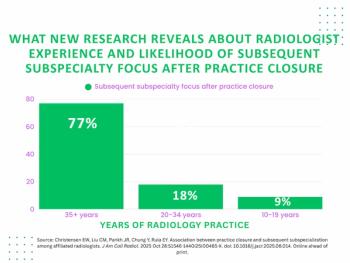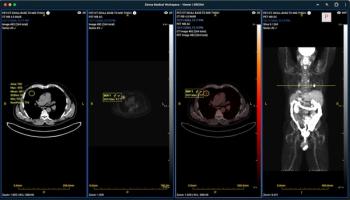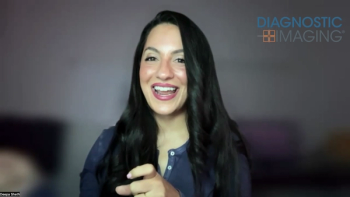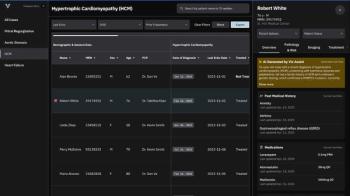
10 Questions with Saurabh Jha, MBBS
For this “10 Questions” series, we spoke with Saurabh Jha, MBBS about his work and the future of radiology.
Our "10 Questions" series asks the same questions to a diverse group of professionals in the imaging community.
Here, we profiled Saurabh Jha, MBBS.
1. Please state your name, title and the organization you work for.
Saurabh Jha, Assistant Professor of Radiology at the University of Pennsylvania.
2. How did you get where you are today?
The root cause was my fear of differential equations. I wanted to be a particle physicist but was intimidated by Maxwell’s equations. I chose medicine instead. I started my training in surgery, then one day I had an epiphany. I like to diagnose problems and let others fix them: so I chose radiology.
3. Why did you choose your profession?
Academia is fun, diverse and there is seldom a dull day. It also pushes one, should one choose to be pushed, to extreme intellectual depths.
4. What is your biggest day-to-day challenge?
Getting clinical context.
Yes, I mean it’s there – you can always call the physician, or search a range of integrated support systems, but it’s not really there. The abundance of documentation and the ‘cut and paste’ functions have led to the recording of a lot of useless junk in medical records. There is a lot of noise, drowning the signal. Sometimes all you want to know is the patient’s presenting complaint.[[{"type":"media","view_mode":"media_crop","fid":"32908","attributes":{"alt":"Saurabh Jha, MBBS","class":"media-image media-image-right","id":"media_crop_2788798075125","media_crop_h":"0","media_crop_image_style":"-1","media_crop_instance":"3469","media_crop_rotate":"0","media_crop_scale_h":"0","media_crop_scale_w":"0","media_crop_w":"0","media_crop_x":"0","media_crop_y":"0","style":"border-width: 0px; border-style: solid; margin: 1px; float: right;","title":"Saurabh Jha, MBBS","typeof":"foaf:Image"}}]]
5. What worries, if any, do you have about the future of radiology? If none, where do you think the field is going?
Imaging has a bright future. The question is the future of radiologists. More specifically, I wonder if a medical degree will be required of a medical imager 20 years from now. On the same lines, I think commoditization is a big concern. With our push for quantification, standardization and guidelines to specify every little thing we do, we are leaving little room for judgment. Our value lies in the fact that there is uncertainty and therefore the need to apply judgment and embrace risk. If what we do is reduced to a user manual, well you don’t really need a medical degree to read and apply a user manual to drive a car. So you get the drift here.
6. What one thing would make your job better?
Legilimency. It’s a skill magic people possess in Harry Potter’s kingdom which allows them to read people’s minds. I would not abuse this skill. I would only use it to figure out what the referring clinician was really thinking. I think it would improve my interpretation, and their clinical management.
7. What is your favorite thing about radiology?
MRI. It is elegant in its sciences (minus those intimidating Fourier equations) and in the image contrast.
8. What is your least favorite thing about radiology?
Hedging. “Can’t rule out pneumonia.” “Can’t rule out malignancy.” “Can’t rule out blah, blah, blah.” It’s become a parody. Referring clinicians
9. What is the field’s biggest obstacle?
I’ll mention a few.
Status quo bias, although this does not specifically afflict radiologists.
The idea that we must develop perfect quality metrics before we can deal with some of the wild prices of imaging. This is paralysis by analysis. Or, status quo grounded by excessive intellectualization.
The insistence that we must have reimbursable billing codes before performing any non-interpretive work. When we think of value only in terms of CPT codes, we are auto-commoditizing ourselves.
10. If you could give the radiology specilty one piece of advice, what would it be?
Improve specificity. That is, become better at calling normality and distinguishing mild spectrum of disease from severe spectrum of disease. This is where the incremental value lies. We are living a diagnostic culture of boundless sensitivity (never miss a disease). We have made a dog’s dinner out of specificity (calling healthy people healthy).
Some years ago, I remember a CT sales person proudly showing the Artery of Adamkiewicz on a CT angiogram of the chest in a presentation for a vendor. It was a really pretty picture. There were audible gasps in the audience, as if we were witnessing a lost painting of Picasso.
I asked, so what? So what if you have the resolution to see the Artery of Adamkiewicz? How does that change the management?
Before undertaking any innovation vendors should ask “so what?” If we ignore clinical context and clinical relevance we will become irrelevant, no matter how pretty those pictures are and how verbose we make our reports.
Is there someone in the imaging community that you want to hear from?
More “10 Questions”
Newsletter
Stay at the forefront of radiology with the Diagnostic Imaging newsletter, delivering the latest news, clinical insights, and imaging advancements for today’s radiologists.






























